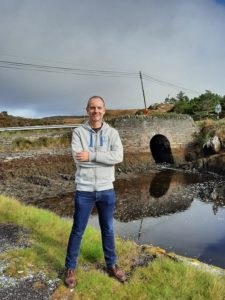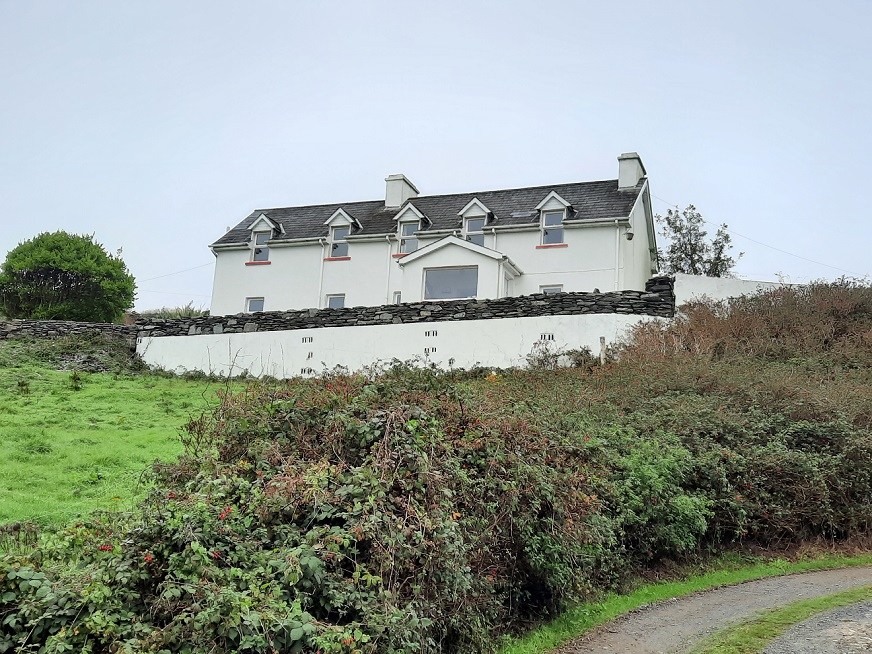When Frenchwoman Sophie Toscan du Plantier was savagely murdered in Ireland, it sent shockwaves across Europe. Brussels-based true crime writer Nick Foster made it his mission to uncover the truth behind the killing
The puzzle intrigued me the first time I heard about it, some weeks after the crime occurred. On a freezing morning two days before Christmas in 1996, the body of Frenchwoman Sophie Toscan du Plantier, 39, was found on a track outside her holiday cottage in the remote settlement of Toormore, on Ireland’s Mizen Head peninsula.
Appallingly, Sophie had been battered to death with as many as 50 blows from a piece of slate. Before fleeing the scene, her killer had dropped a heavy concrete block on her torso. There were no witnesses and no apparent motive since Sophie was liked by the few people locally who knew her. Meanwhile, the Garda, the Irish police force, thought the location was simply too isolated for a prowler.
Sophie was a documentary film producer and lover of Irish poetry, so it was initially no surprise when investigators found an anthology of Irish verse in the cottage left open at a particular poem. It was just that the choice was baffling – even chilling – in the circumstances. The poem Sophie had marked was A Dream of Death by W.B. Yeats. It describes a beautiful young woman dying alone in a foreign land, far from her lover, her family and her friends, in an environment that is clearly rural.
Did Sophie have a premonition about her own death and select the poem accordingly? Or did her killer somehow enter her house after the crime, leaving absolutely no trace, and mark Sophie’s anthology at precisely this piece of verse as a kind of macabre calling card?
I’ve been working for the European Union since 1994 – when I first heard of Sophie’s murder, I was a translator – and for the past decade I’ve juggled work as an EU official with a sideline writing true crime books. My first book, The Jolly Roger Social Club, came out in 2016 and told the story of an American serial killer in an edgy, expat community in Panama, Central America, where almost everyone seemed to be on the run from something or somebody. My second – Murder at Roaringwater, on the Sophie case – was published earlier this year.
When EU overlaps true crime
When people in the Brussels bubble find out about my second career, their jaw usually drops. If I had told them I moonlighted as a lion tamer in a circus, they would hardly be more surprised. Yet my experience as an EU official dovetails well with investigative long-form non-fiction.
For both my books, I got my hands on the relevant police files and a big stack of court papers. This is key to true crime writing: there will be interviews to request and front doors to knock on, but the bread and butter of the story is likely to be the raft of statements and depositions available to detectives working on the case. This is the first thing you need.
Working for the EU, I’ve often had to read vast volumes of background documents. Over the years, I have developed a good sense of whether an author of a letter or a report is being frank and sincere, or whether they likely are lying or have something to hide. My five years in the mid-2000s spent working at the EU Delegation in Caracas, Venezuela – a country with a reputation for sky-high levels of corruption – was a baptism of fire, but a very useful one.
Another valuable lesson from Caracas was to know when to keep quiet, and observe. That led me to an interest in cold reading: trying to figure out details of a person I had just met from their body language, how they spoke and interacted, the way they dressed, and so on.
The second thing you need to write true crime books is access. You need to get the main players in your story – the victim’s family and key witnesses, for example – to trust you enough to talk to you. Such people will naturally be wary of your motives. To be sure, the average Commission official needs this true crime skill like a fish needs a bicycle. By trial and error, I had to learn it by myself.

Nick Foster at the Kealfadda Bridge on the Mizen peninsula in Ireland.
In the case of Sophie Toscan du Plantier, the question of access boiled down to getting to know Ian Bailey, an Englishman living a couple of miles from Sophie across a rough, windswept moor. Like Sophie, he was 39 years old at the time of the crime. He styled himself as a poet, performing his verse in pubs in the area (“whether we wanted to hear it or not” as one Mizen resident put it to me).
Bailey eked out a living from gardening jobs and occasional freelance reporting for Irish newspapers. Broad-shouldered, with Byronesque good looks, Bailey was attractive to women, but had a temper he found hard to control, and a record of violent attacks on his partner. His northern English accent sounded plummy to Irish ears: local people mistook him for being a bit posh, and a faintly patrician bearing as he aged aided the misconception.
Bailey was the first journalist to appear at the crime scene. His newspaper stories on the murder soon raised eyebrows among the detectives. How did this English reporter know so many physical details about the attack Sophie had sustained and snippets about her married life, despite not attending a single Garda press conference? Soon the newspaperman covering the crime became the main – and, ultimately, only – suspect. He was arrested twice, but never charged.
In France, the public prosecutor took a different view. In 2019, the French authorities put Bailey on trial for Sophie’s murder, in proceedings he labelled a “farce”, and refused to attend. In a Parisian courtroom, Bailey was found guilty and sentenced to 25 years in prison. But Ireland turned down France’s extradition requests. On the Mizen Bailey is still a free man today.
I got to know Ian Bailey in 2014. I introduced myself to him in Dublin where he was suing the Irish state and police for wrongful arrest and conspiracy. Essentially, his story was that he had been stitched up for a crime he had nothing to do with. Bailey treated me warmly from the outset. We are both from the north-west of England – Bailey from Manchester, me from Liverpool. It was clear that he was keen to talk about the Sophie case and its aftermath.
But Bailey faced a huge challenge to assert his innocence. He had no alibi for the night of the crime; and had scratches on his hands and forearms the day after it, but none the previous evening, according to witnesses. Incredibly, he also appeared to have admitted carrying out the killing to several people he knew socially.
In Dublin, crossing a bridge with Bailey over the dark water of the River Liffey on the way to a pub, I heard a man shout “Murderer!” I asked Bailey if that happened often. He replied: “Oh, every week or so.”
The clue in the slate
Several months later, visiting Bailey at his home on the Mizen for the first time, he told me that a stone wall on his property needed repairing. It turned out that a farmer he knew had a quarry with slate stones, which Bailey said would be ideal for the job.
Of course: it was a piece of slate that Sophie’s murderer had used to batter her body. We set off to get the stones and arrived at what must have been Ireland’s smallest quarry – a semi-circular deposit of rocks next to a deserted lane. My new friend took some tools out of the back of his car. I watched as Bailey, a man of 58, picked up stones that must have weighed 15-20kg.
He raised them with no difficulty at all. After a few moments, he selected one particular piece of slate and knelt next to it, bringing his hammer down sharply on his chisel. I could see the concentration in his face, a kind of tension in the muscles in his cheeks and around his mouth. As the hammer hit the slate, Bailey appeared to relax. The piece of slate had split in two. He said: “Look, the face of that stone hasn’t seen daylight in millions of years.”
Bailey carried out the same operation on several more pieces of slate, carrying each one over to the boot of his vehicle. All the time I was thinking: Bailey knows that I know the case. He surely knows I am aware that Sophie was killed with a piece of slate and then a concrete block. In a short outing, I had seen him handle pieces of slate, and demonstrate that he was still powerful enough to carry heavy stones with ease. Bailey chose today of all days to carry out this task. I wondered: why is he doing this in front of me?
If he was trying to intimidate me, he failed. My book lays down an very powerful case against him. It has already had an effect: this spring, six years after my first trip to the Mizen, Bailey’s partner left him. He said my book was the “last straw” for their relationship.
It’s been a long time coming, but Bailey could be facing his reckoning. Two major documentaries have been broadcast, adding to the piles of evidence: Jim Sheridan’s ‘Murder at the Cottage’ on Sky Crime (in which I feature fleetingly), and ‘Sophie: A Murder in West Cork’, a three-part series on Netflix. In the meantime, the Garda has set up a new unit to investigate this coldest of cold cases. With the 25th anniversary of Sophie’s murder looming, justice may finally be served.
______________________________________________________
Nick Foster’s ‘Murder at Roaringwater: The Inside Story of the Death of Sophie Toscan du Plantier’ is published by Mirror Books. It will shortly appear in French with the title Elle s’appelait Sophie, published by L’Archipel


